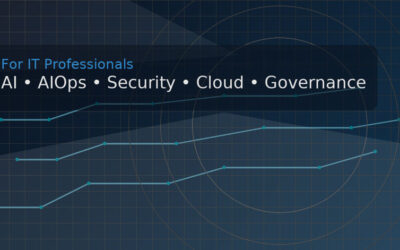The business world is constantly evolving, with technology playing an ever-increasing role in operational success and financial planning. As companies navigate the fast-paced landscape of 2024, cutting-edge marketing strategies, particularly those designed for SaaS (Software as a Service) businesses, are proving critical to not only achieving growth but also optimizing financial performance and long-term cost efficiency.
The Role of IT in Business Operations and Financial Strategy
As the digital transformation continues to accelerate, businesses must align their operational strategies with IT-driven solutions. The growing reliance on technology and data analytics is reshaping traditional financial models, placing an increased emphasis on cost optimization, tax planning, and resource allocation. IT innovations are no longer just a support function; they are now central to driving business strategy and competitive advantage.
Companies that effectively leverage IT solutions, including cloud-based infrastructures and AI-driven analytics, can streamline their operations and create significant cost savings. For example, cloud computing enables businesses to scale their IT infrastructure as needed, avoiding upfront capital expenditures. This flexible model has clear financial implications, allowing companies to allocate resources more efficiently, reduce waste, and ultimately boost profitability.
Additionally, AI and machine learning tools have emerged as key drivers of financial forecasting accuracy. By automating data analysis, companies can generate more precise predictions for revenue growth, cash flow, and operating costs. These insights empower leadership teams to make more informed decisions that optimize financial outcomes.
How SaaS Marketing Strategies Support Corporate Objectives
SaaS businesses are a key example of how IT innovations are influencing corporate strategy. In 2024, SaaS businesses are increasingly relying on data-driven marketing strategies to differentiate themselves in a competitive landscape. These strategies are not only driving customer acquisition but are also reshaping corporate financial management.
For example, SaaS companies are leveraging customer data to personalize marketing campaigns, creating targeted messaging that resonates with their ideal clients. This personalized approach significantly increases conversion rates and reduces customer acquisition costs, leading to improved profitability. Companies across industries can apply similar tactics in their marketing efforts, ensuring that every dollar spent on customer acquisition is optimized for maximum return on investment (ROI).
SaaS businesses are also focusing on customer retention through subscription models, which provide predictable revenue streams and minimize the need for large upfront costs. This recurring revenue model is beneficial for corporate financial planning, as it allows for more accurate forecasting and better cash flow management.
Cost Efficiency Through IT Solutions and Automation
Automation has become a cornerstone of business efficiency, and its influence on cost management cannot be overstated. By automating routine tasks, businesses can free up valuable time for their teams to focus on higher-level activities. Automation also minimizes human error, which can lead to costly mistakes in areas such as accounting, compliance, and data management.
Consider the role of automation in the finance department. Tasks such as invoice processing, expense management, and tax reporting can now be handled by automated systems. These systems not only reduce the need for manual labor but also improve accuracy and speed, allowing businesses to close financial periods faster and with fewer errors.
For example, the integration of robotic process automation (RPA) in accounting systems allows for the real-time tracking of expenses, providing leadership teams with a more accurate picture of cash flow at any given moment. This transparency is crucial for strategic decision-making, particularly in times of economic uncertainty.
Tax Implications of IT Investments
Investing in IT infrastructure and SaaS solutions comes with significant tax implications that businesses must consider. Many governments offer tax incentives for companies that invest in research and development (R&D), cloud computing, or other digital transformation initiatives. These tax incentives can lead to substantial savings, further reducing the overall cost of IT investments.
However, businesses must also consider the tax treatment of SaaS subscriptions. While SaaS services typically fall under operational expenses rather than capital expenditures, companies should carefully review their tax strategies to ensure compliance with relevant laws and maximize any available tax benefits.
As SaaS becomes increasingly integral to business operations, tax planning strategies must evolve to account for the nuances of this business model. Organizations should work closely with their tax advisors to develop comprehensive strategies that address these considerations, helping to minimize tax liabilities while still reaping the benefits of IT investment.
Enhancing Operational Efficiency with Cloud-Based SaaS
Cloud-based SaaS platforms are at the forefront of driving operational efficiency. By providing businesses with scalable solutions, cloud computing enables companies to access critical tools without the need for substantial capital investment in hardware or software. This shift from traditional IT infrastructure to SaaS not only reduces costs but also enables companies to respond more rapidly to market changes.
A key advantage of cloud-based SaaS solutions is the ability to access real-time data and analytics from anywhere. This accessibility fosters collaboration across departments and enhances decision-making at all levels of the organization. For businesses looking to optimize their financial performance, the real-time visibility into operational data is invaluable.
Moreover, SaaS solutions can be customized to meet the specific needs of a business, ensuring that companies only pay for the features and functionalities they require. This level of flexibility allows organizations to scale their operations in a cost-effective manner, making it easier to achieve long-term financial goals.
AI-Driven Personalization in SaaS Marketing and Its Financial Impact
One of the most notable trends in SaaS marketing for 2024 is the use of AI-driven personalization. This innovative approach leverages machine learning algorithms to analyze customer behavior and deliver highly personalized experiences that drive engagement and retention. By anticipating customer needs and preferences, businesses can increase customer loyalty and lifetime value.
From a financial perspective, AI-driven personalization reduces the cost of acquiring new customers by improving the effectiveness of marketing campaigns. It also increases customer retention, leading to a more stable and predictable revenue stream. For SaaS businesses that operate on a subscription model, this stability is crucial for long-term financial planning and investor confidence.
Businesses outside the SaaS industry can also benefit from AI-driven personalization. By leveraging customer data and applying predictive analytics, companies can tailor their marketing efforts to maximize ROI and improve operational efficiency.
The Strategic Importance of Data Security in IT Investments
As businesses continue to adopt IT solutions, data security has emerged as a top priority. Cyberattacks are becoming more sophisticated, and the financial consequences of a data breach can be devastating. In addition to the direct costs associated with lost data and operational downtime, companies face reputational damage, regulatory fines, and legal liabilities.
For these reasons, businesses must invest in robust cybersecurity measures as part of their IT strategy. Cloud-based SaaS providers are increasingly offering advanced security features, including encryption, multi-factor authentication, and real-time monitoring, to help businesses protect their sensitive data. By investing in these solutions, companies can mitigate the financial risks associated with cyber threats.
Furthermore, data security is not just an IT concern—it is a financial imperative. The cost of a data breach can run into millions of dollars, with long-term implications for profitability and market position. Companies must approach cybersecurity from a strategic perspective, ensuring that it is integrated into their overall financial planning.
Future-Proofing Operations with IT-Driven Innovation
To stay competitive in 2024 and beyond, businesses must continuously evolve their operations and strategies. IT innovations, including SaaS marketing strategies and automation tools, are essential for future-proofing business operations and achieving long-term financial success.
By embracing these technologies, businesses can enhance their operational efficiency, reduce costs, and improve decision-making. However, the key to success lies in aligning IT investments with overall business strategy. This requires a collaborative approach between IT departments and leadership teams, ensuring that every technological investment contributes to the company’s financial and operational goals.
As the pace of innovation accelerates, businesses must be prepared to adapt to new trends and technologies. Those that fail to do so risk falling behind their competitors and missing out on valuable growth opportunities.
The Impact of SaaS on Financial Forecasting and Long-Term Cost Efficiency
SaaS platforms are reshaping how businesses manage their financial forecasts. The cloud-based infrastructure of SaaS allows companies to scale resources as needed, avoiding heavy capital expenditures on IT hardware. This scalability is particularly important in today’s volatile market, where businesses need the flexibility to adjust their operations without incurring excessive upfront costs.
In addition to scalability, the subscription-based pricing models typical of SaaS platforms offer predictability in financial planning. This recurring revenue model allows businesses to forecast more accurately and allocate resources based on real-time needs. It also helps mitigate the risks associated with large, unpredictable IT expenditures by distributing costs more evenly over time.
As businesses increasingly adopt cloud-based SaaS solutions, they also benefit from continuous software updates provided by vendors. This eliminates the need for costly in-house maintenance and ensures that companies are always using the most up-to-date technology. In turn, this reduces downtime and minimizes the risk of operational disruptions that can have significant financial consequences.
Cybersecurity in SaaS: Protecting Financial Data and Business Operations
In a digital-first world, the importance of cybersecurity cannot be overstated. As businesses transition to SaaS models, they must prioritize the protection of sensitive financial and operational data. Data breaches and cybersecurity threats can result in not only significant financial losses but also irreparable damage to a company’s reputation.
SaaS platforms, with their cloud-based infrastructure, often provide advanced security features, including encryption, multi-factor authentication, and real-time monitoring. These security measures are critical for businesses that store sensitive financial information and rely on cloud-based solutions for their day-to-day operations. Additionally, many SaaS providers now incorporate AI-driven security protocols that detect and mitigate potential threats before they cause significant damage.
From a financial perspective, investing in robust cybersecurity measures is a prudent decision. The financial costs of a data breach—both direct and indirect—can be staggering, including the loss of customer trust, regulatory fines, and legal liabilities. By integrating advanced cybersecurity measures into their SaaS solutions, businesses can protect their bottom line and ensure long-term financial stability.
The Role of SaaS in Enhancing Collaboration and Operational Efficiency
SaaS platforms have fundamentally changed how businesses collaborate and manage operations. Cloud-based solutions enable teams to work together in real-time, regardless of their geographic location. This has been particularly valuable in an era where remote and hybrid work models are becoming the norm. SaaS tools facilitate communication, file sharing, and project management, leading to more streamlined workflows and improved operational efficiency.
For example, businesses that adopt cloud-based CRM systems or enterprise resource planning (ERP) tools can centralize their operations, ensuring that all departments have access to the same data. This not only improves collaboration but also enhances decision-making processes, as all stakeholders can work with accurate, up-to-date information.
From a financial standpoint, the ability to streamline operations and reduce inefficiencies has a direct impact on cost savings. SaaS tools eliminate the need for multiple disconnected systems, which can be costly and difficult to manage. By integrating various functions into a single, cloud-based platform, businesses can reduce overhead and improve their overall financial performance.
Marketing Automation and AI-Driven Personalization
In 2024, SaaS companies are increasingly turning to marketing automation and AI-driven personalization to differentiate themselves in a crowded marketplace. These tools allow businesses to deliver highly personalized experiences to their customers, improving engagement and boosting conversion rates. For instance, AI-powered algorithms analyze customer behavior and predict what products or services they are most likely to purchase, enabling companies to tailor their marketing efforts accordingly.
Marketing automation, particularly in the SaaS space, reduces the manual effort required for customer outreach and engagement. By automating tasks such as email marketing, lead scoring, and social media management, businesses can focus on strategic initiatives while still maintaining a high level of customer engagement. This not only increases operational efficiency but also improves ROI by reducing the cost of acquiring new customers.
Moreover, AI-driven personalization allows companies to maximize the lifetime value of their customers. By delivering targeted, relevant content based on customer preferences and behavior, businesses can foster stronger relationships with their clients, leading to higher retention rates and increased revenue over time.
Data-Driven Decision Making in SaaS and Financial Strategy
The importance of data-driven decision-making cannot be overstated in today’s SaaS-driven world. Businesses that harness the power of data analytics can make more informed decisions about everything from resource allocation to marketing strategies. For instance, by analyzing customer usage data, SaaS companies can identify underutilized features, guiding future product development and ensuring that resources are allocated efficiently.
This approach to decision-making is particularly valuable from a financial perspective. By using data to identify trends and patterns, businesses can optimize their operations, reduce waste, and improve overall profitability. Additionally, data-driven insights enable companies to better predict future demand, helping them to plan their resources and budgets more effectively.
The use of AI and machine learning in data analytics also allows businesses to automate routine tasks and focus on more strategic initiatives. For example, AI-driven tools can analyze financial data in real time, identifying potential issues before they become major problems. This proactive approach to financial management can save businesses significant time and money, ensuring that they remain competitive in an increasingly complex market.
SaaS, IT Innovations, and Financial Optimization in 2024
The intersection of SaaS, IT innovations, and business strategy is reshaping how organizations approach financial management and operational efficiency. By leveraging AI, automation, and data-driven decision-making, businesses can optimize their operations, reduce costs, and improve their long-term financial performance. As the SaaS market continues to grow in 2024, companies that embrace these innovations will be better positioned to succeed in an increasingly competitive landscape. Whether it’s through marketing automation, enhanced cybersecurity, or cloud-based collaboration tools, the future of business operations lies in the hands of IT-driven solutions that deliver both financial and strategic value.
The Strategic Imperative of IT and SaaS in 2024
The intersection of IT innovations and business strategy is more critical than ever in 2024. Companies that effectively leverage IT solutions, including SaaS marketing strategies and automation, can not only improve operational efficiency but also optimize their financial performance. By focusing on cost efficiency, tax implications, and data security, businesses can position themselves for long-term success in an increasingly digital world.
As technology continues to evolve, the most successful organizations will be those that align their IT investments with their broader financial and operational goals. By staying ahead of the curve and embracing the latest innovations, businesses can unlock new opportunities for growth and profitability in the years to come.







